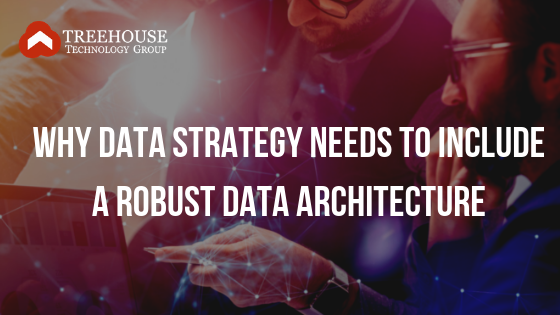Recently, on the Treehouse Technology Group blog we’ve discussed the importance of data strategy. However, an important factor in establishing an effective data strategy is to include a robust data architecture.
Let’s begin with defining data architecture. According to the Harvard Business Review, data architecture “describes how data is collected, stored, transformed, distributed and consumed. It includes rules governing structured formats, such as databases and file systems, and the systems for connecting data with the business process that consume it.”
In other words, data architecture is the building of the infrastructure used to create the business impacts that are previously identified in the data strategy. To help understand the importance of a data architecture, we’ve put together four characteristics of a modern data architecture:
- Automation
In order to create an adaptable data architecture in which data flows continuously, designers must automate everything. Real-time is always the goal and full automation is the only way to support that.
- Intelligence
The ideal data architecture is more than just automated. It uses machine learning and artificial intelligence to build the data objects, tables, views, and models that keep data flowing. It also uses intelligence to learn, adjust, alert, and recommend, thereby making people who administer and use the environment more efficient and effective.
- Flexible
In the age of big data, organizations need a scalable, flexible architecture that adapts to changing data processing requirements. Your initial requirements will never be the final requirements, and the architecture must be open and adaptable.
- Secure
A modern data architecture should be a fortress. It provides authorized users ready access to data while keeping hackers and intruders at bay. There should be a multi-layered approach to data security within any modern architecture. It also needs to comply with privacy regulations such as the Health Insurance Portability and Accountability Act (HIPPA). Lifecycle management ensures each data object has an owner, a location, and an obsolescence plan.
Conclusion
Ultimately, data architecture maps out the blueprint for collecting and transforming raw data into information. It provides the map for data navigation paths within the data strategy framework.
If you are interested in learning more about data architecture or improving the data architecture within your company’s data strategy, reach out to Treehouse Technology Group today.
